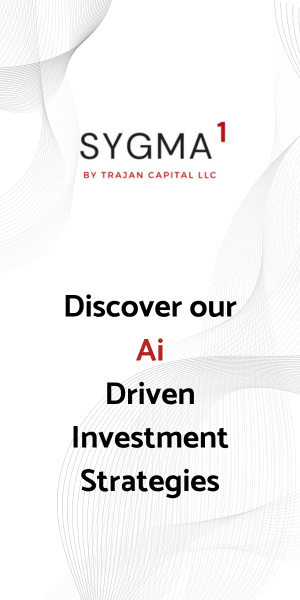The Evolution Towards Autonomous Learning Investment Strategies (ALIS)

Introduction
Investment strategies have evolved significantly over the centuries, adapting to changes in markets, technology, and investor behavior. Today, we stand on the brink of a new era in investment management, marked by the emergence of Autonomous Learning Investment Strategies (ALIS). This innovative approach integrates advanced artificial intelligence (AI) with traditional financial acumen, offering unprecedented capabilities in data processing, decision-making, and adaptive learning.
As investment professionals, understanding ALIS is not just about keeping up with the latest trends; it’s about preparing for a future where AI-driven strategies could dominate the landscape. This article delves into the evolution of investment strategies, from fundamental and quantitative approaches to the sophisticated algorithms that define ALIS. We will explore how AI has paved the way for these advanced systems, the benefits they offer, the key characteristics that set them apart, and why ALIS might just be the next big leap in asset management.
History of Investment Managers
Fundamental Strategies
The journey of investment management began with fundamental strategies, which focus on the intrinsic value of securities. Rooted in financial statements, economic indicators, and market trends, these strategies rely heavily on human judgment and qualitative assessment. The grandfather of this approach, Benjamin Graham, introduced ‘value investing’ in the 1920s, which emphasized evaluating a company’s long-term fundamentals, such as earnings, dividends, and financial strength, to identify undervalued stocks.
Over time, fundamental analysis has evolved, incorporating broader economic factors and market conditions but always maintaining its core principle: the stock price reflects not just current worth but also future prospects.
Quantitative Strategies
The advent of computers in the mid-20th century ushered in quantitative strategies, which use mathematical models to predict market behavior. This method contrasts sharply with fundamental strategies by minimizing human emotion and bias through algorithms. Quant strategies range from simple model-based forecasts to complex structures involving derivatives and high-frequency trading.
The 1980s marked a significant turning point as increased computing power made it possible to process large data sets quickly, allowing quants to exploit inefficiencies in the market at speeds and volumes impossible for human traders.
Transition to Autonomous Learning
The development of ALIS did not occur in a vacuum but rather as a natural progression from quantitative strategies, enhanced by leaps in AI and machine learning. Early applications of AI in finance were quite rudimentary, focusing on automating routine tasks. However, as AI technologies advanced, so did their applications in investment strategies, setting the stage for the autonomous learning capabilities we see in ALIS today.
These historical roots have set the framework for ALIS, blending the data-driven precision of quant strategies with the adaptive, predictive capabilities of modern AI. As we delve deeper into the specifics of ALIS in the following sections, we’ll see how this new approach is not just an evolution but a revolution in investment management.
Evolution of AI in Finance
The integration of artificial intelligence (AI) into finance is not just a recent phenomenon; it has been gradually taking shape over several decades. Initially, AI was primarily used for basic data processing and repetitive tasks. However, as technology advanced, so did the applications of AI, moving towards more complex decision-making processes in investment strategies.
Early AI Applications in Finance
In the early days, AI in finance was synonymous with simple algorithms designed to automate clerical tasks such as data entry and transaction processing. These systems were rudimentary by today’s standards but marked the first steps toward digitalizing the financial sector. By the 1980s, more sophisticated applications began to emerge, including program trading, which used algorithms to execute large orders of stocks when certain market conditions were met, thereby minimizing market impact and reducing costs.
Breakthroughs in AI Technology
The real breakthroughs in AI technology began with the advent of machine learning and pattern recognition. These technologies allowed systems not only to execute predefined tasks but also to learn from data and improve over time. In the late 1990s and early 2000s, neural networks and deep learning started to take center stage, enabling the analysis of massive datasets beyond the capability of traditional statistical methods.
This era saw the development of predictive models that could analyze market trends and investor behaviors with unprecedented accuracy. AI systems began to identify subtle patterns in historical data, predicting stock movements based on complex combinations of factors, ranging from global economic indicators to minute price changes.
Current State of AI in Financial Systems
Today, AI is at the heart of many financial systems, driving everything from fraud detection and risk management to automated trading and personal finance. AI’s capability to process and analyze data at lightning speeds and its ability to learn and adapt to new information has made it an invaluable tool in modern finance.
One of the most significant impacts of AI in finance is on investment strategies. Traditional and quantitative methods are increasingly augmented—or even replaced—by AI-driven approaches. These strategies leverage machine learning to create models that continuously learn and adapt, becoming more sophisticated over time.
AI Reshaping Investment Strategies
The introduction of ALIS is perhaps the most transformative application of AI in finance to date. Unlike previous strategies that relied on static models, ALIS employs advanced machine learning techniques to dynamically adjust its models based on ongoing market developments. This allows ALIS to perform complex investment decisions autonomously, enhancing efficiency and effectiveness in managing portfolios.
Moreover, AI’s ability to integrate and analyze data from diverse sources, including non-traditional ones like social media and real-time news updates, gives ALIS a distinct edge in today’s fast-paced market environment. By synthesizing this information, ALIS can anticipate market shifts more accurately and react more swiftly than traditional human-driven or even earlier quantitative strategies.
What is ALIS?
Defining Autonomous Learning Investment Strategies
Autonomous Learning Investment Strategies (ALIS) represent the pinnacle of the integration of AI in investment management. At its core, ALIS is about leveraging machine learning to develop self-improving algorithms that can manage investment portfolios with minimal human intervention.
Core Technologies Behind ALIS
The backbone of ALIS is a combination of several advanced technologies:
- Machine Learning: Unlike static algorithmic models, machine learning systems in ALIS can improve their decision-making algorithms based on new data, outcomes, and feedback loops.
- Natural Language Processing (NLP): This allows ALIS to parse and understand market news, reports, and even tweets to gauge market sentiment and potential impacts.
- Predictive Analytics: By employing sophisticated predictive models, ALIS can forecast market trends and asset price movements more accurately than traditional models.
- Big Data Analytics: ALIS systems are designed to process vast amounts of data—from market data to economic indicators—at speeds and volumes that are impossible for human analysts.
How ALIS Differs from Previous Investment Strategies
The traditional and quantitative strategies laid the groundwork for ALIS, but several key distinctions set it apart:
- Adaptivity: ALIS doesn’t just execute pre-set rules; it adapts its strategies based on ongoing learning and changing market conditions.
- Speed and Efficiency: ALIS can analyze data and make decisions faster than any human or traditional computerized system, giving it a significant advantage in fast-moving markets.
- Complex Data Integration: ALIS can integrate and analyze data types that are too complex for traditional models, such as unstructured data from diverse sources.
Advantages of ALIS
Enhanced Decision-Making Speed and Accuracy
One of the most compelling advantages of Autonomous Learning Investment Strategies is their ability to make rapid and accurate investment decisions. With ALIS, the time taken to analyze market data and execute decisions is drastically reduced. This speed advantage allows ALIS-managed funds to capitalize on market opportunities that would be too fleeting for human traders or slower, traditional algorithms.
Ability to Process and Analyze Vast Datasets
ALIS systems can handle significantly larger amounts of data than human managers or earlier quantitative models. This includes not just structured data like market prices and financial statements but also unstructured data like news articles, social media posts, and economic reports from around the globe. The ability to synthesize and draw insights from this data is crucial in today’s information-heavy market environment.
Improved Adaptability to Market Changes
Markets are dynamic, often volatile entities that can change rapidly due to various factors including economic changes, political events, or technological breakthroughs. ALIS systems are designed to adapt to these changes much more efficiently than humans. By continuously learning from new data, ALIS can adjust its strategies in real-time, minimizing risks and exploiting new opportunities as they arise.
Cost Efficiency by Reducing Human Error and Intervention
ALIS reduces the need for human intervention in the day-to-day management of investment portfolios, which not only cuts down on labor costs but also reduces the likelihood of errors that can occur in manual processes. Moreover, ALIS’s ability to operate continuously, 24/7, without fatigue, further enhances its effectiveness and efficiency.
Key Characteristics of ALIS
Autonomy in Learning and Decision-Making
The hallmark of ALIS is its autonomy. Unlike traditional systems that require human input for decision-making, ALIS systems are capable of independent learning and decision-making based on pre-set objectives and real-time data. This autonomy is underpinned by sophisticated algorithms that can evaluate risks, predict market trends, and allocate assets accordingly.
Continuous Learning and Adaptation
At the core of ALIS’s functionality is its ability to learn continuously from its successes and failures. This is a crucial feature that differentiates ALIS from static models used in earlier investment strategies. Through machine learning techniques, ALIS adjusts its algorithms based on new information and market conditions, ensuring that its strategies are always aligned with the latest market dynamics.
Predictive Analytics and Its Importance
Predictive analytics enable ALIS to forecast future market conditions and asset price movements with a high degree of accuracy. This predictive capability is based on historical data analysis and real-time market sensing, allowing ALIS to position the investment portfolio advantageously ahead of market moves.
Integration of Diverse Data Sources
ALIS’s ability to integrate and analyze data from a wide variety of sources—including financial markets, global economic indicators, and even non-financial data such as geopolitical developments or environmental factors—gives it a comprehensive view of the global investment landscape. This integration allows ALIS to make well-informed decisions that consider a broad spectrum of influences.
ALIS as the Next Generation of Asset Managers
Comparing ALIS to Traditional and Quantitative Managers
While traditional and quantitative managers have served the investment community well, ALIS represents a significant step forward. The key difference lies in ALIS’s ability to learn and adapt autonomously, which allows it to outperform static models in a constantly changing market environment. Additionally, ALIS’s integration of diverse data sources and its predictive analytics capabilities provide it with insights that are beyond the reach of human managers.
Future Trends and Potential Developments in ALIS
As AI technology continues to evolve, so too will ALIS. Future developments may include greater integration with blockchain technology for improved security and transparency, enhanced natural language capabilities to better understand and predict the impacts of news and social media on markets, and even more sophisticated risk management algorithms.
Impact on the Job Market and Investment Industry
The rise of ALIS is likely to have a profound impact on the job market within the investment industry. While some roles may be diminished, new opportunities will arise for professionals who can manage, improve, and innovate in AI-driven investment environments. The overall efficiency and effectiveness of the investment industry are expected to improve, leading to better outcomes for investors.
Conclusion
Autonomous Learning Investment Strategies represent a significant advancement in the field of investment management. By harnessing the power of AI, ALIS can process vast amounts of data, adapt to market changes swiftly, and make decisions with a high degree of accuracy and efficiency. As we look to the future, ALIS stands poised to redefine the landscape of investment management, promising not only to enhance asset management but also to drive the development of new strategies that could shape the financial world for years to come.


